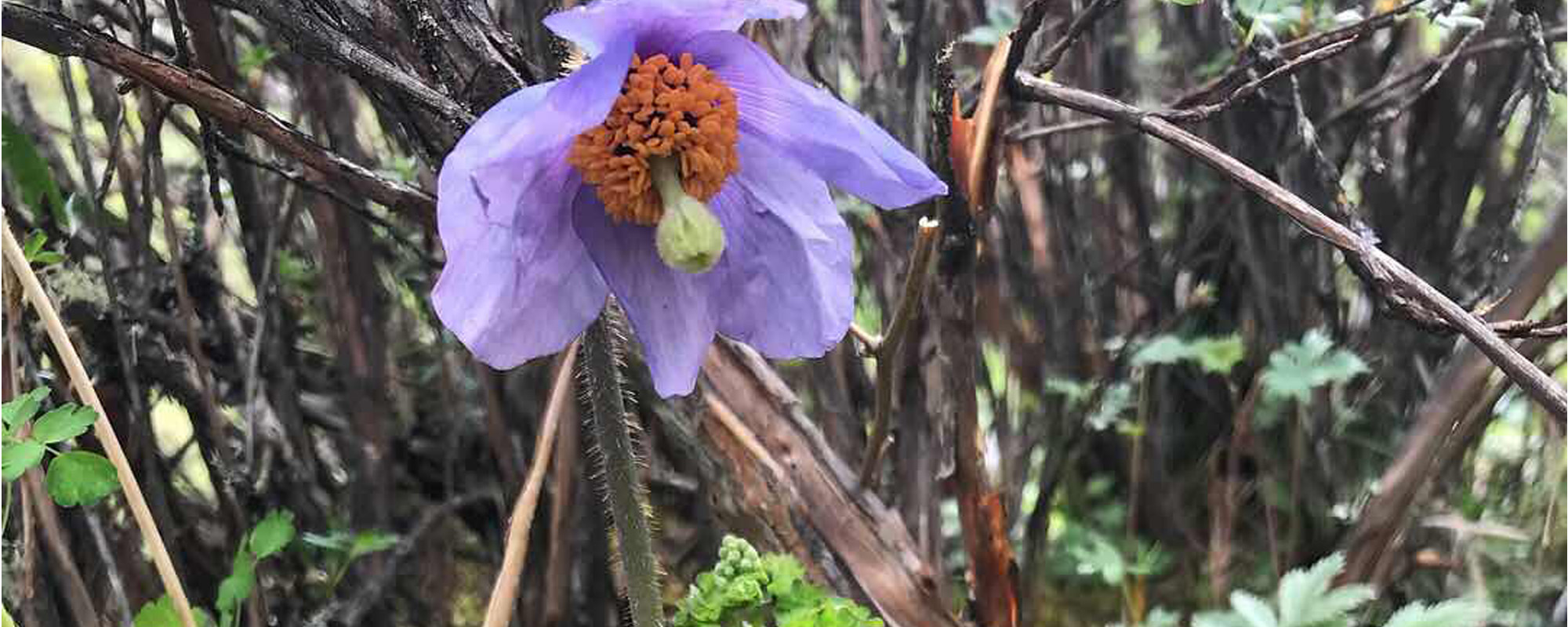
BLUE POPPY TREK
The Blue poppy trek is a very special trek and beautiful where you can see many different colors
of poppy flowers and among them the rarest Blue poppy. You can also expect to see wild
pheasants and blue sheep as well on this trail.
The specialty lies in the fact that your destination- the Nub Tshonapata Lake is considered a very
holy and revered lake.
Day 1- Puduna to Sungzikha
Day 2- Sungzikha to E-lukha
Day 3- E-lukha to Haa
Day 1- Puduna to Sungzikha
Trek Rating: Moderate.
Maximum Altitude: 3700m
Duration: 6 hours
Lunch: Picnic
Overnight: Camping
Drive about 30 minutes from Haa town to Puduna Village in the east of Haa valley to begin the trek. Walk gently uphill through Puduna village and then continue through pine and rhododendrons forest. After approximately one hour you reach Pajakha village. Continue to Chuzokha Lhakhang (temple) for few hours where you can stop for a picnic lunch and visit the Lhakhang.
It is believed that the Lhakhang has been founded in the 17th century. From here you continue to climb for a few more hours through fir and hemlock forests to Sungzikha where you camp for the night at approximately 3600m.
Day 2- Sungzikha to E-lukha
Trek Rating: Moderate
Maximum Altitude: 4100m
Duration: 7 hours
Lunch: Picnic
Overnight: Camping
Start your trek by climbing for about one hour to Labokha, from where there are views of Mount Jomolhari and the Himalayas. From Labokha you walk along the ridge, a mixture of ascents and descents to Thimphu Ri (Ri-Mountain). From here you should still be able to see Jomolhari and down into the Haa Valley on one side, with the Nob Tsonapata range on the other side. Cross the Shamu La at around 4100m then descend about one hour to camp at E-lukha at around 3700m.
Day 3- E-lukha to Haa
Trek Rating: Moderate
Maximum Altitude: 3800m
Duration: 6 hours
Lunch: Picnic
Overnight: Hotel
Today the trail is mostly downhill through a variety of different vegetation. This is also a good area to spot birds. Your driver will meet you in Haa town. Return to Paro for the night.